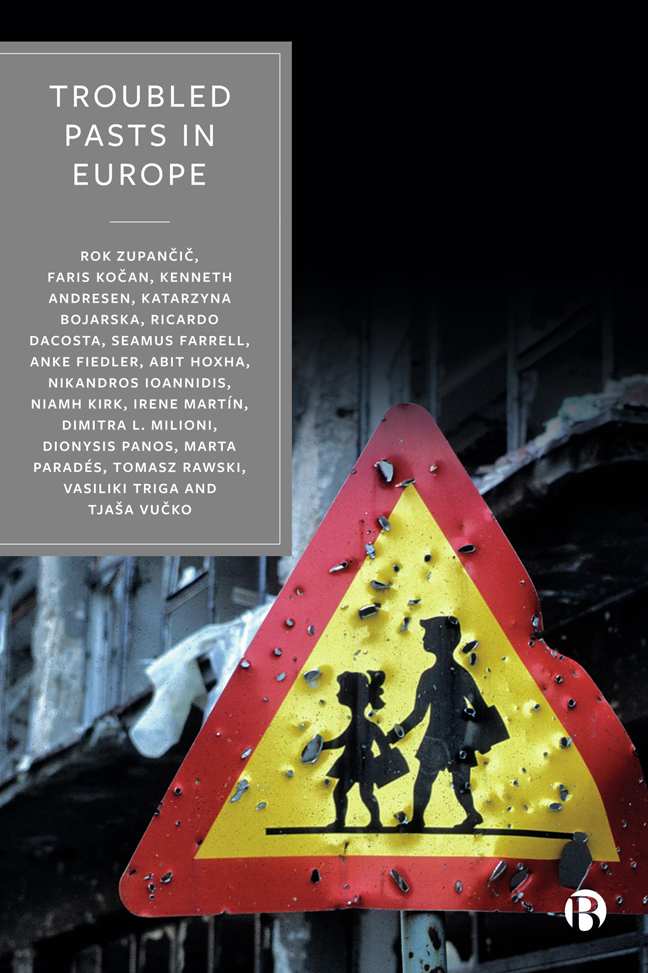 Troubled Pasts in Europe
Troubled Pasts in Europe Published online by Cambridge University Press: 25 January 2024
Introduction
Debates about Kosovo's troubled past mostly reflect on the last war (1998–9) that de facto brought to an end the reign of Serbs. Occasionally, these discussions extend to the period of the collapse of the Ottoman Empire, the foundation of the Albanian independent state in 1912, the Second World War and the period of Yugoslavia when Kosovo was for some time an autonomous province populated with Albanians, Serbs and other communities – and even further back, to the Middle Ages, when the Serbian medieval state ruled these territories. Mostly, for Kosovo, the troubled past started erupting again in the late 1980s, when the autonomous province was stripped of autonomy by Milosevic; many researchers take the 600th anniversary of the Battle of Kosovo that took place at Gazimestan near Prishtina in 1989 as a prelude to the point of no return, which was then set in stone in June 1999 with North Atlantic Treaty Organization (NATO) troops being deployed to Kosovo after a NATO military operation against the Federal Republic of Yugoslavia (FRY).
During the clash between Kosovo Albanians and FRY in the 1990s, segregationist policies were implied in education and Kosovo Albanians self-organized parallel institutions, schools, elections and healthcare as a nonviolent movement in response to segregation policies imposed by Milosevic's Serbia. Parallel with the non-violent movement, Kosovo Albanians who were dissatisfied with non-violence organized the military resistance which led to creation of the Kosovo Liberation Army (KLA). The war started with sporadic clashes between the FRY forces and the KLA in 1998, which erupted in March 1999 just before the NATO intervention that started on the 24 March 1999 and lasted until 10 June 1999. The Organization for Security and Co-operation in Europe (OSCE) in a report from 2003 estimated that during that time 862,979 refugees left Kosovo and were pushed towards neighbouring countries in Albania, Macedonia and some in Montenegro in the attempts to ethnically cleanse Kosovo (OSCE, 1999).
After the war ended in 1999, a new period of dealing with the past started, mainly dominated by court processes and less armed violence in the ethnically still divided society. To date, conflicts of the past are often brought back to life by the media and political discourses which produces hate and stands in the way of ethnic reconciliation and overall political progress.
To save this book to your Kindle, first ensure [email protected] is added to your Approved Personal Document E-mail List under your Personal Document Settings on the Manage Your Content and Devices page of your Amazon account. Then enter the ‘name’ part of your Kindle email address below. Find out more about saving to your Kindle.
Note you can select to save to either the @free.kindle.com or @kindle.com variations. ‘@free.kindle.com’ emails are free but can only be saved to your device when it is connected to wi-fi. ‘@kindle.com’ emails can be delivered even when you are not connected to wi-fi, but note that service fees apply.
Find out more about the Kindle Personal Document Service.
To save content items to your account, please confirm that you agree to abide by our usage policies. If this is the first time you use this feature, you will be asked to authorise Cambridge Core to connect with your account. Find out more about saving content to Dropbox.
To save content items to your account, please confirm that you agree to abide by our usage policies. If this is the first time you use this feature, you will be asked to authorise Cambridge Core to connect with your account. Find out more about saving content to Google Drive.